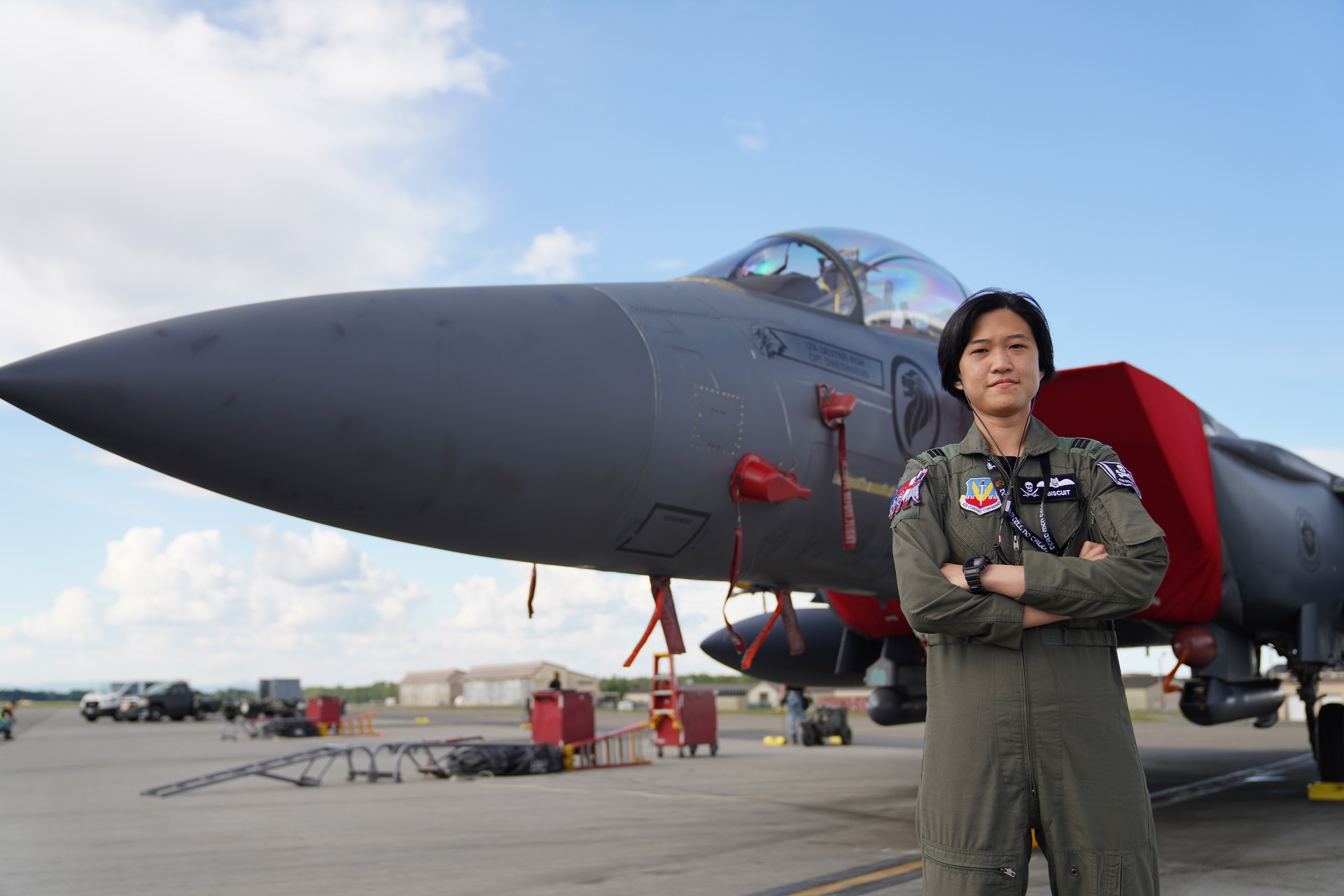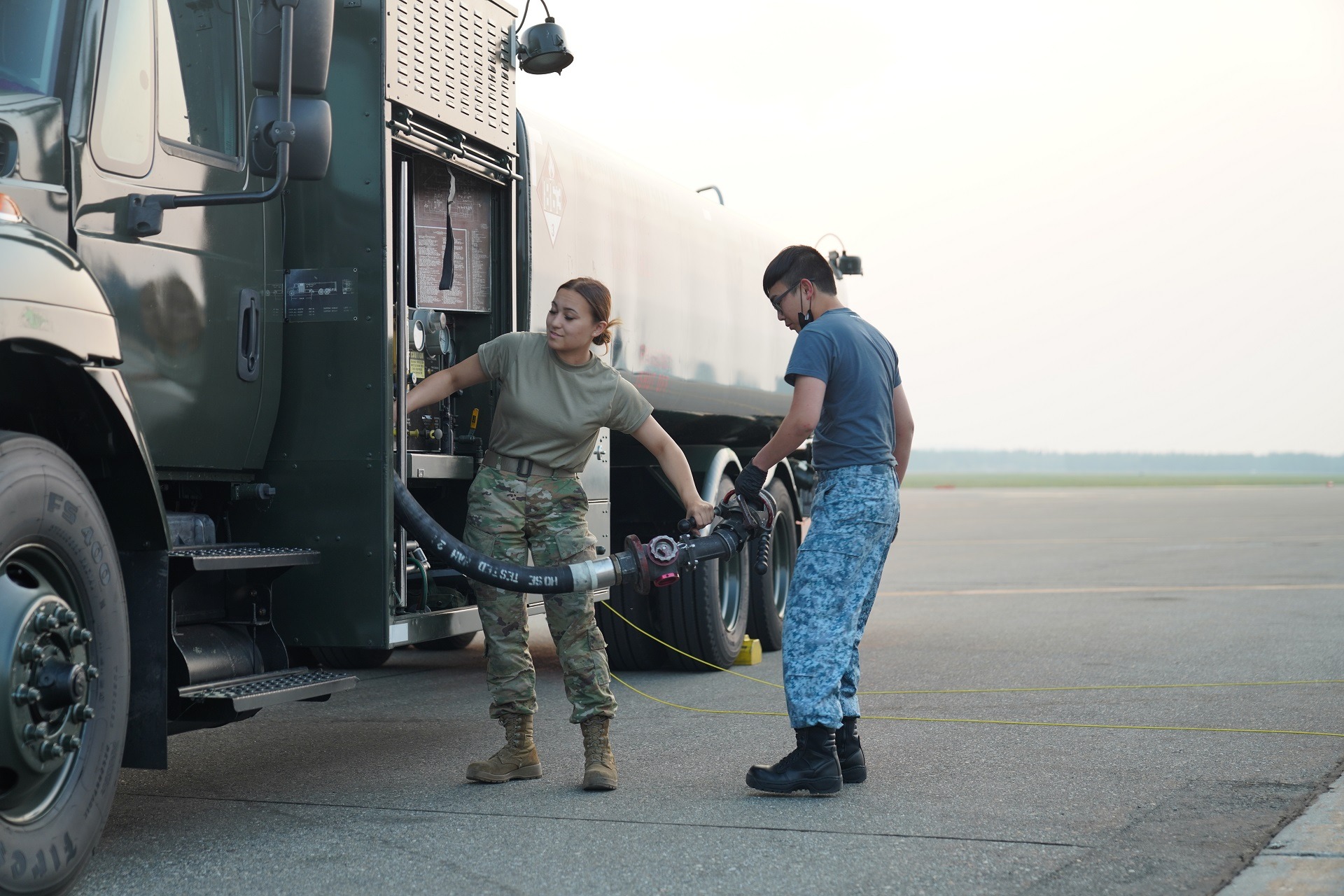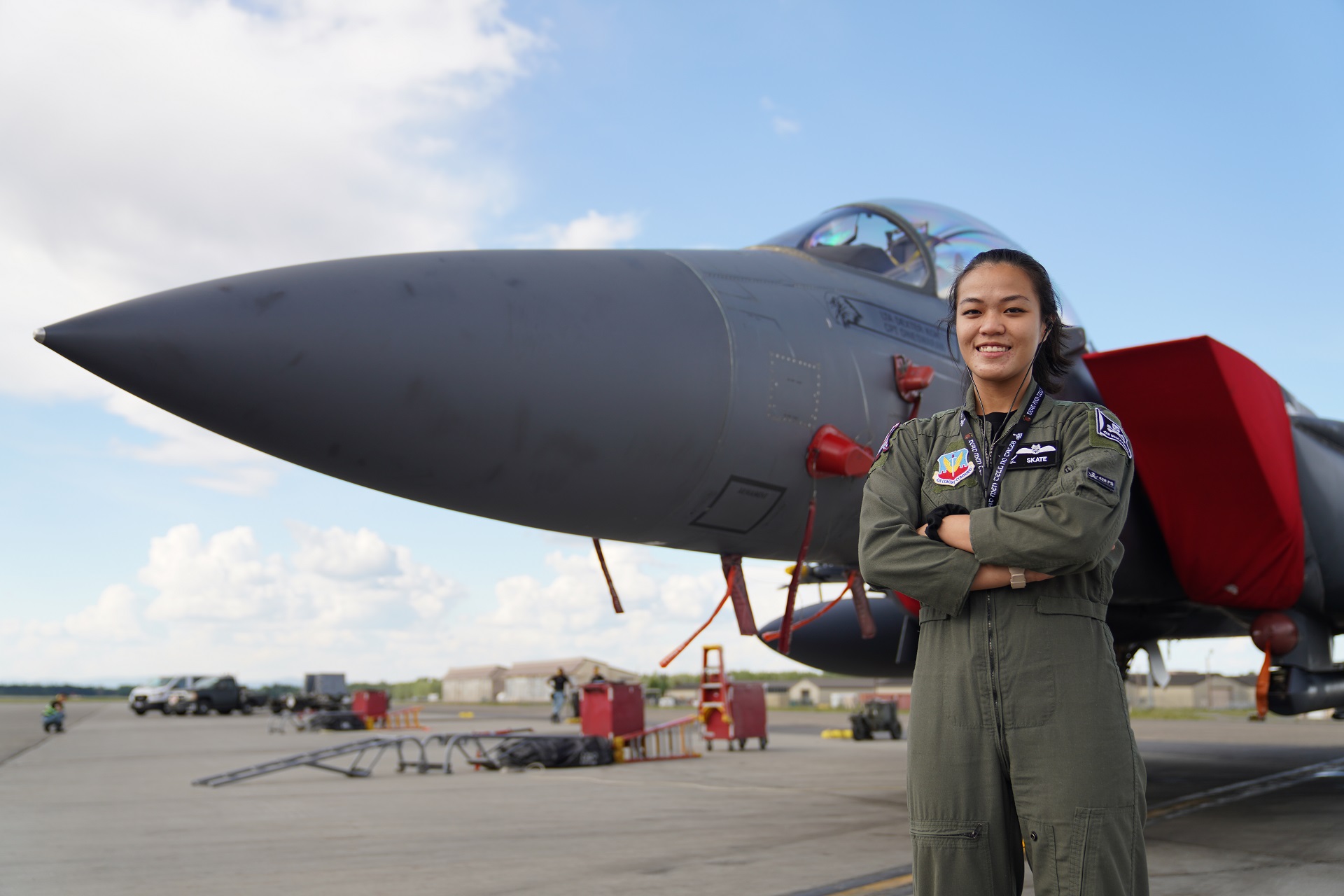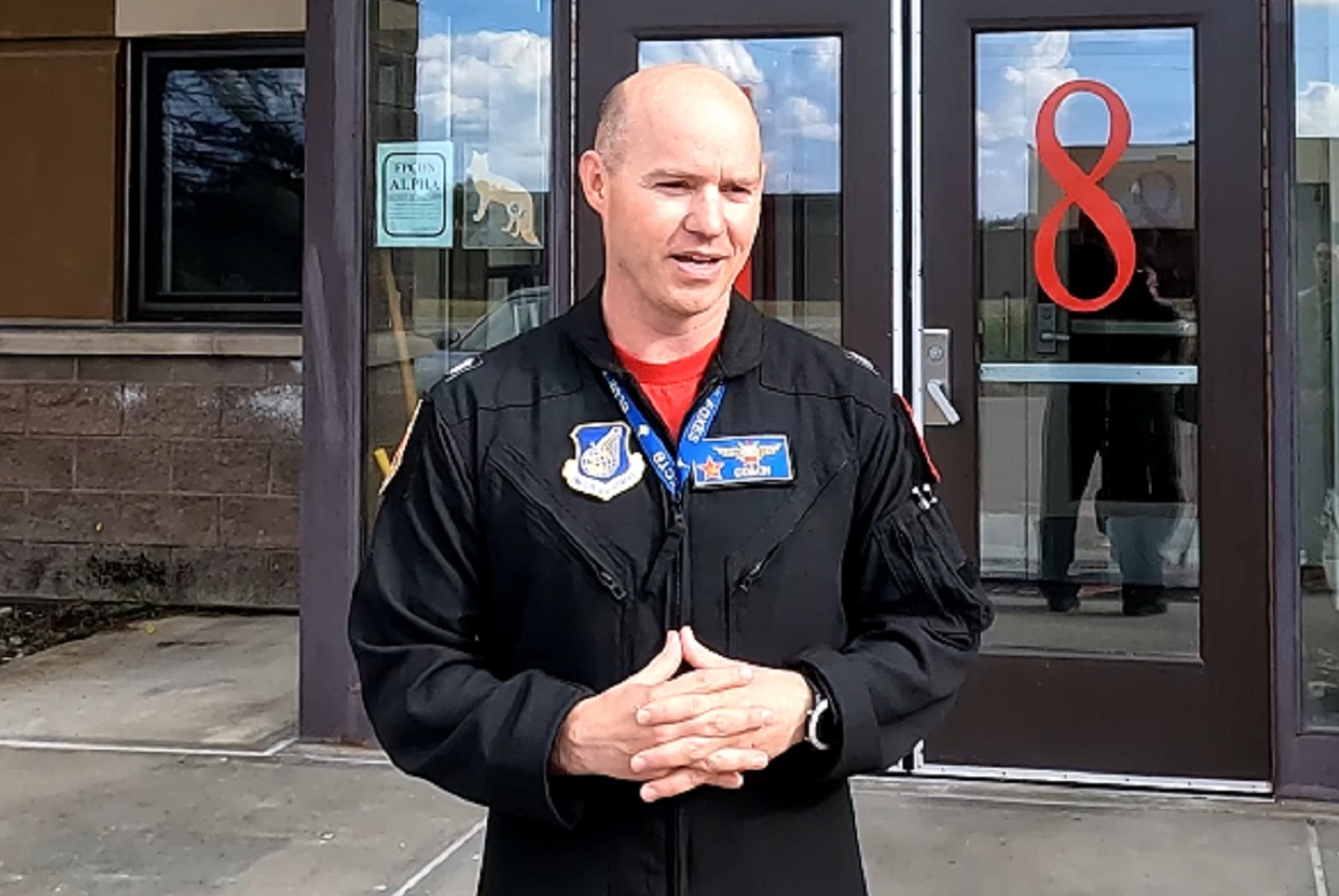OPS & TRAINING
YOUNG RSAF CREW ACE EX RED FLAG – ALASKA
25 Jun 2022
Multi-role missions. Air-to-air refuelling. Working with a foreign navy and army.
These were some of the key missions tasked to the airmen and women from the Republic of Singapore Air Force (RSAF) at Exercise Red Flag – Alaska and their United States (US) counterparts.


Multi-role missions. Air-to-air refuelling. Working with a foreign navy and army.
These were some of the key missions tasked to the airmen and women from the Republic of Singapore Air Force (RSAF) at Exercise Red Flag – Alaska and their United States (US) counterparts.

Held from 9 to 25 Jun, 10 RSAF F-15SG fighter aircraft and over 140 RSAF personnel from Peace Carvin V (PC V) Detachment took part in the large-scale air-to-air combat exercise, which was hosted by the United States Air Force (USAF) at Eielson Air Force Base in Alaska, US.
This year, a total of more than 80 aircraft, including the USAF's F-18, F-16, EA-18G and A-10 fighter aircraft were involved in the exercise, as well as assets from the US Army and US Marine Corps.
The USAF and RSAF worked closely on integrated missions in
realistic threat and simulated combat scenarios, and honed their combat
readiness and sharpened operational competencies.
Stretching their limits
As part of the exercise, RSAF fighters carried out multi-role missions together with the USAF.
For instance, fighters in the air would be called on to drop bombs on targets while taking out air-to-air threats at the same time. These new missions could be generated by other aircraft such as the USAF's EA-18G and A-10 fighter aircraft while RSAF aircrew are mid-flight.
"There's a lot of communication and coordination going on; they pass the targets over to us and we drop our munitions (on the targets). That was interesting and exciting for us to see for the first time," said F-15SG fighter pilot Captain (CPT) Julie Lim.

This was the 29-year-old's first time at the exercise, where she had the opportunity to drop an inert GBU-31, which is a 2,000-pound Joint Direct Attack Munition (JDAM), for the first time.
Keeping up with the fast-paced missions also pushed the ground crew to test the limits of their capabilities, said Air Force Engineer Military Expert (ME) 2 Prenesh Bryan Deverajan.


Stepping up to new challenges
For 27-year-old F-15SG Weapon Systems Officer Lieutenant Hannah Teo, flying in the huge airspace was an eye-opening experience. This is her first time participating in Exercise Red Flag – Alaska and the largest exercise she has been involved in.

Said
LTA Teo, who oversees the aircraft’s weapon system, avionics and
navigation: “I was a bit overwhelmed flying for the first time here,
because there were many aircraft in the same airspace… (but) it helped
me to gain a better situational awareness for the flights in the
subsequent days.”
Valuable training
“The sheer size of the airspace, (participating) assets and resources at Exercise Red Flag – Alaska provides us with the opportunity to engage in more complex, dynamic and realistic (missions),” said PC V Detachment Commander Lieutenant Colonel (LTC) Shewan Goh, 42.
He added: “We learnt from the best practices and
cross-share our tactics, techniques and procedures (in order to) sharpen
our operational capabilities and benchmark our skills against the
participating units.”
Honing combat skills
LTC Goh said that the team’s hard work and preparation have paid off: “We began preparation months before the exercise – starting with component training before scaling up in intensity and complexity.
“I’m very proud of the first-timers, they’ve done very well. Even though there were hiccups at the beginning, they pushed through the challenges with teamwork.”


Their US counterparts expressed similar sentiments. “The RSAF has displayed exceptional tactics and competencies during this exercise. They have proved themselves to be on par with other advanced air forces and hit every target that they were assigned,” said Lieutenant Colonel Christopher McGoffin, Director of Operations for the 18th Aggressor Squadron, USAF.
“I am impressed with the skills and performance that the RSAF aircrew have displayed in leading and operating in large force packages, from the planning to the execution phases of the exercise.
“It is also important for us to continue to hone how we operate together, and strengthen our relationships at the professional and personal level through such exercises,” he added.
ALSO READ IN OPS & TRAINING

Exercise Wallaby 2025: To see better, shoot faster
31 Oct 2025
The SAF focuses on complex strike missions and multi-domain integration in Exercise Wallaby 2025, the 35th edition of its largest unilateral overseas exercise.

Ex Wallaby 25 – Greater Integration and Complexity
25 Oct 2025
The 35th edition of the SAF’s largest unilateral overseas exercise is an opportunity for expanded scale and deeper integration towards an effective, networked fighting force.

Ex Forging Sabre ramps up use of unmanned assets in integrated strike operations
12 Sep 2025
In this 10th edition of Exercise Forging Sabre, the SAF sharpened its cutting edge for the dynamic modern battlefield, with expanded integration between manned and unmanned platforms.


